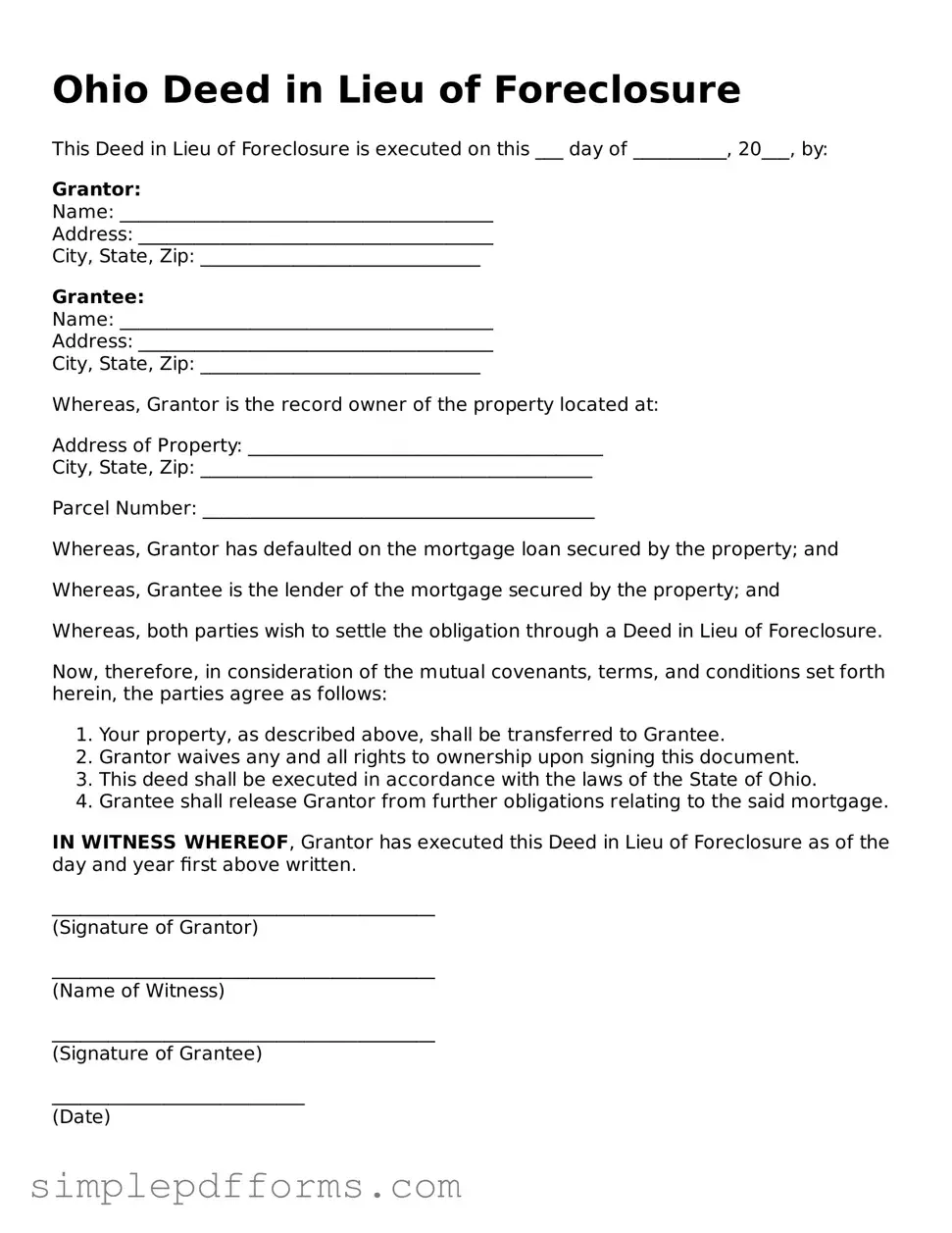Ohio Deed in Lieu of Foreclosure
This Deed in Lieu of Foreclosure is executed on this ___ day of __________, 20___, by:
Grantor:
Name: ________________________________________
Address: ______________________________________
City, State, Zip: ______________________________
Grantee:
Name: ________________________________________
Address: ______________________________________
City, State, Zip: ______________________________
Whereas, Grantor is the record owner of the property located at:
Address of Property: ______________________________________
City, State, Zip: __________________________________________
Parcel Number: __________________________________________
Whereas, Grantor has defaulted on the mortgage loan secured by the property; and
Whereas, Grantee is the lender of the mortgage secured by the property; and
Whereas, both parties wish to settle the obligation through a Deed in Lieu of Foreclosure.
Now, therefore, in consideration of the mutual covenants, terms, and conditions set forth herein, the parties agree as follows:
- Your property, as described above, shall be transferred to Grantee.
- Grantor waives any and all rights to ownership upon signing this document.
- This deed shall be executed in accordance with the laws of the State of Ohio.
- Grantee shall release Grantor from further obligations relating to the said mortgage.
IN WITNESS WHEREOF, Grantor has executed this Deed in Lieu of Foreclosure as of the day and year first above written.
_________________________________________
(Signature of Grantor)
_________________________________________
(Name of Witness)
_________________________________________
(Signature of Grantee)
___________________________
(Date)
